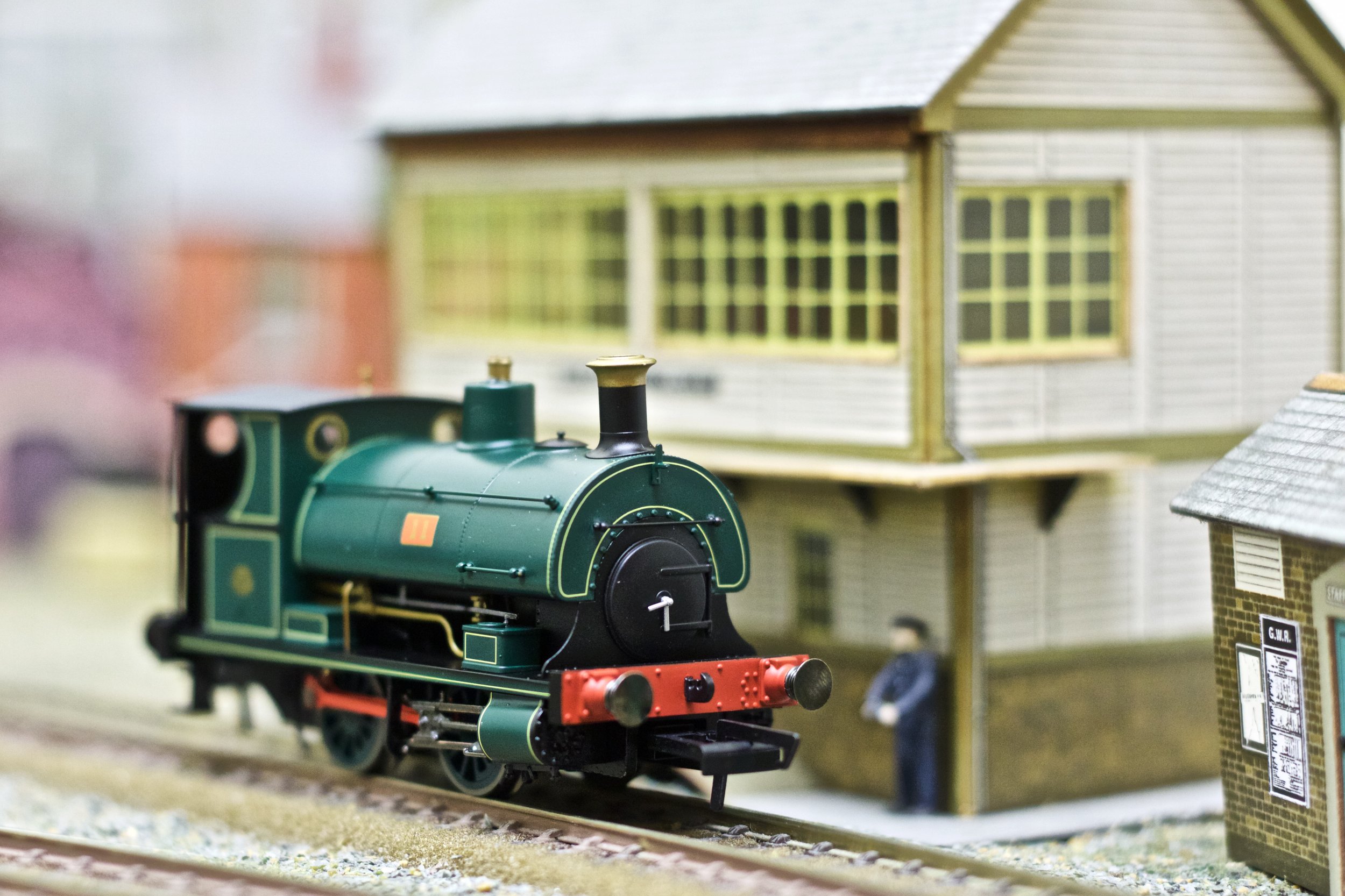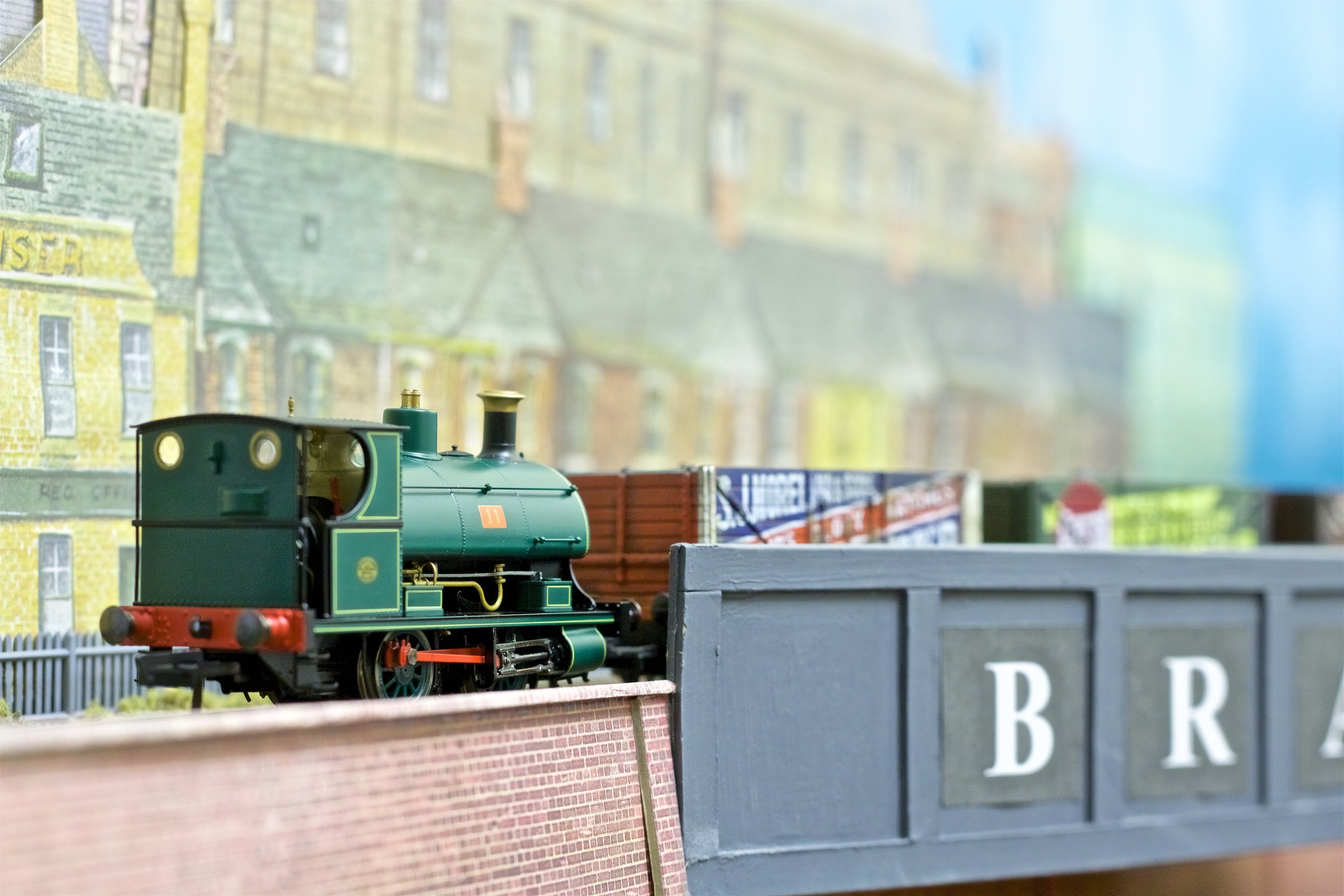Written by Richard Grigg. Special thanks to Rob Pendry for the loan of his model for this review.
Introduction
Built between 1885 and 1906 by Peckett & Sons the class W4 0-4-0 ST Peckett consisted of 140 members. These little shunters were primarily seen in various collieries, docks, steelworks and factories however the W4s were most notably seen working in the following locations:
• Manchester Ship Canal
• Ebbw Vale Steelworks
• Huntly & Palmers
The class W4s worked well into the 1960s and today at least 3 of them have survived into preservation. In this review we shall be looking at Hornby's debut offering of the class W4 Peckett in the form of the Manchester Ship Canal no:- 654 (R3428) with a RRP of £87.99.
Also available:
• R3427:- Base Livery no:- 563 'Dodo'
• R3429:- Huntly & Palmers no:- 832
• R3550:- Lilleshall Co. no:- 883 (coming late 2017)
Packaging
The model is packed in what has become the standard style packaging utilised by both Hornby and Bachmann, a card sleeve, when slid back, reveals a sturdy box inside of which the locomotive is held securely in the now infamous 'block of ice' plastic packing. In a rare occurrence there's no bag of additional accessories included simply because there's no need for it, as we'll see in the detail section of this review. As ever the all important care/maintenance instruction sheet is enclosed.
Detail
It has to be said that the detailing on these Pecketts is absolutely divine, separately fitted items include handrails adorning the saddle tank, safety valves on top of the dome, a small whistle valve atop of the cab roof, lamp irons both front and back and smokebox dart handles. There's also copper piping and connecting rods for the sandboxes slung under the water tank on either side of the boiler as well as metal buffers and cosmetic coupling hooks on both buffer beams. Below the running board the detail continues with cab steps, outlet pipes from the sanding gear and brake shoes in front of the wheels. The traction rods and valve gear assembly is accurately scaled in terms of thickness and is of very sturdy construction. Turning to the cab the sublime detail continues to shine through with a separately fitted regulator, reversing lever, handbrake and copper pipework with valve wheels attached. The model also offers a generous amount of moulded detail in the form of rivets along the saddle tank, cab sides, cab roof and buffer beams. With the aid of an LED torch moulded details can also be seen on the backhead inside the cab. To anyone who owns or is planning on buying one of these Pecketts I would voice a small note of caution regarding the tiny whistle valve on the cab roof, being made of plastic it can very easily break if the model is not handled with due care.
Livery Application
The dark green paintwork is finished to a very high standard and is complimented by the very fine and intricate lining along the saddle tank, cab, sandboxes, sole bar and cylinders. The printed decals are sharp and clear, to the extent that the builder's plates on the cab sides are perfectly legible.
Special Features
In spite of the model's small stature provisions for installing DCC have been addressed. A small 4-pin decoder can be inserted into the socket beside the motor housing.
Performance
Fitted with a sealed 5-pole motor the model operates very smoothly and as it turns out really quietly. the care/maintenance instruction sheet shows in the illustrations a flywheel attached to the motor, however due to the limited space for the wiring it seems that the flywheel has had to be omitted. Despite this the overall performance doesn't seem to be affected in any way. With this model what you loose with the flywheel you gain with the ratio of the gearing to the wheels. In terms of traction the model benefits from the saddle tank, boiler and chassis being machined from die cast metal providing ample grip to the tiny wheels.
Final Thoughts
Since they were announced back in 2015 the Pecketts have become one of Hornby's most anticipated releases, so much so that it has resulted in all three variants practically selling out on pre orders alone long before their general release in the model shops. I'm pleased to say that they have certainly been worth the wait, the models' exquisite and intricate details combined with the smooth and quiet operation defiantly places them among Hornby's elite creations.
Pros & Cons
Pros
• Immaculate detail both moulded and separately fitted
• Quiet and smooth runner
• High tractive effort
• Excellent value for money
Cons
• Fragile detail on top of the cab roof
With this I give an overall score of 9.5/10










